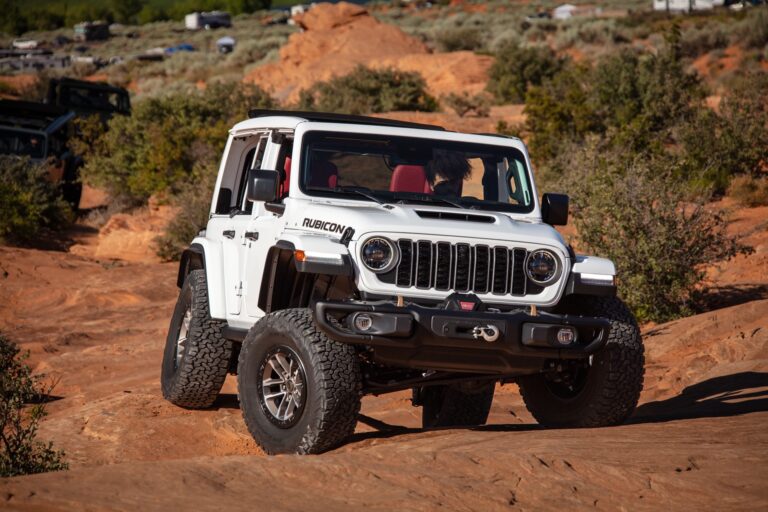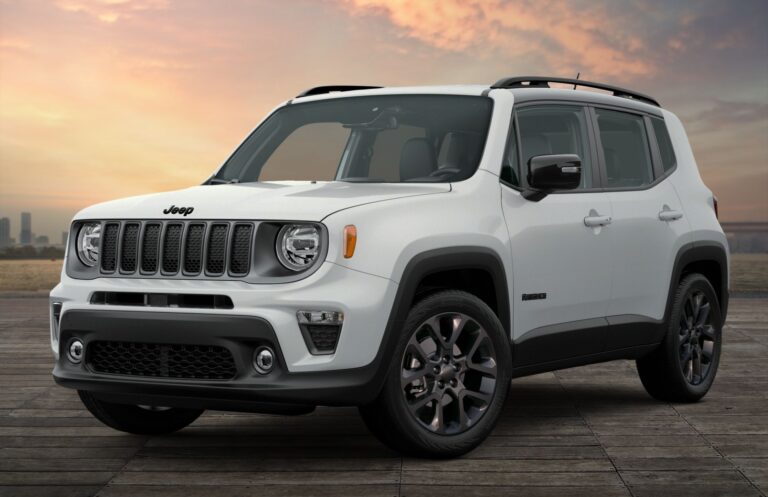2001 Jeep Cherokee Sport XJ For Sale: A Timeless Icon on the Market
2001 Jeep Cherokee Sport XJ For Sale: A Timeless Icon on the Market jeeps.truckstrend.com
The year 2001 marked the end of an era for one of the most iconic and beloved SUVs ever produced: the Jeep Cherokee XJ. Specifically, the 2001 Jeep Cherokee Sport XJ represents the final iteration of a vehicle that revolutionized the SUV market, combining unibody construction with rugged off-road capability in a package that was both practical for daily driving and formidable on the trails. For sale today, a 2001 Cherokee Sport XJ isn’t just a used car; it’s a piece of automotive history, a testament to enduring design, and a highly sought-after platform for enthusiasts, adventurers, and those who appreciate mechanical simplicity and genuine utility. Its enduring relevance stems from its legendary 4.0-liter inline-six engine, robust solid axles, and a compact, maneuverable size that makes it as capable on tight forest trails as it is navigating urban landscapes. If you’re considering acquiring one of these legendary machines, understanding its nuances, benefits, and potential challenges is paramount to making an informed decision.
Why the 2001 XJ? A Lasting Legacy
2001 Jeep Cherokee Sport XJ For Sale: A Timeless Icon on the Market
The Jeep Cherokee XJ generation, produced from 1984 to 2001, is often credited with popularizing the compact SUV segment. Unlike many of its contemporaries that relied on traditional body-on-frame construction, the XJ pioneered a lightweight unibody design, offering a more car-like ride without sacrificing the legendary off-road prowess Jeep was known for. The 2001 model year holds particular significance as the very last production run. This means it benefits from years of incremental refinements, yet retains the core characteristics that made the XJ a legend.
At its heart, most 2001 XJs feature the revered 4.0L PowerTech I6 engine. This engine is renowned for its durability, torque, and surprising simplicity, often running for hundreds of thousands of miles with proper maintenance. Paired most commonly with the Aisin-Warner AW4 automatic transmission, another component celebrated for its reliability, the powertrain combination is a testament to robust engineering. The XJ’s solid front (Dana 30) and rear (Dana 35, or less commonly, Dana 44) axles provide excellent articulation and strength for off-road conditions, while its relatively short wheelbase and narrow body allow it to navigate obstacles that larger, more modern SUVs would struggle with. For many, the 2001 XJ strikes the perfect balance between classic Jeep ruggedness and a touch of modern refinement, making it a highly desirable target for those looking for a capable and charismatic vehicle.
Understanding the "Sport" Trim and Key Features
The "Sport" trim level for the 2001 Jeep Cherokee XJ was designed to be a more accessible, yet still capable, option compared to the more luxurious Limited or Classic trims. While it typically came with fewer creature comforts as standard, it still offered a solid foundation for both daily driving and off-road adventures.
Key features often found on a 2001 Cherokee Sport XJ include:
- Engine: The ubiquitous 4.0L PowerTech I6 engine, producing 190 horsepower and 225 lb-ft of torque. Its low-end torque is particularly useful for off-roading.
- Transmission: Most commonly, the AW4 4-speed automatic transmission. A rarer 5-speed manual (NV3550) was also available, offering a more engaging driving experience and sometimes better fuel economy.
- Transfer Case: Two primary options were available:
- NP231 Command-Trac: A part-time 4WD system (2WD, 4-High Part-Time, N, 4-Low Part-Time) ideal for off-road use, but not for paved roads in 4WD.
- NP242 Selec-Trac: A full-time 4WD system (2WD, 4-High Full-Time, 4-High Part-Time, N, 4-Low Part-Time), offering the flexibility of using 4WD on all surfaces, including dry pavement. This is generally more desirable for those seeking all-weather versatility.
- Axles: Front Dana 30, rear Dana 35. The Dana 44 rear axle was a rare option, usually part of a "Tow Package," and is highly sought after for its increased strength.
- Interior: Typically featured cloth seats, manual or power windows/locks (depending on options), air conditioning, and an AM/FM stereo. While basic by modern standards, the interior is highly functional and durable.
- Exterior: Often characterized by black plastic fender flares, front bumper, and rear bumper caps, distinguishing it from the body-colored trims of higher models.

The "Sport" trim truly embodies the XJ’s utilitarian spirit, providing a no-frills, robust platform that can be enjoyed as-is or customized extensively.
What to Look For When Buying (Inspection Guide)
Acquiring a 2001 Jeep Cherokee Sport XJ requires a keen eye and a thorough inspection, as these vehicles are over two decades old and many have seen hard use. Here’s what to prioritize:
- Rust: This is the XJ’s Achilles’ heel. Inspect the unibody frame rails (especially near the steering box and rear leaf spring mounts), rocker panels, floorboards (under carpets), rear quarter panels (behind the rear wheels), and the lower door seams. Surface rust is common, but through-rust is a major red flag that indicates significant structural compromise.
- Engine (4.0L I6):
- Oil Leaks: Check for leaks from the rear main seal (common but often manageable), valve cover gasket, and oil filter adapter.
- Cooling System: Inspect the radiator (plastic end tanks are prone to cracking), water pump, thermostat housing, and fan clutch. Overheating is detrimental to these engines.
- "0331" Cylinder Head: The 2000-2001 4.0L engines came with the 0331 casting cylinder head, which is known to crack between cylinders 3 and 4 due to overheating, leading to coolant loss and potential engine damage. Check the coolant reservoir for oil contamination or a "milky" appearance. A pressure test of the cooling system is highly recommended. Some XJs may have had this head replaced with a revised TUPY or aftermarket head – a huge plus.
- Transmission (AW4): Check fluid color (should be red, not brown or burnt), smell (shouldn’t smell burnt), and level. Test drive to ensure smooth shifts without flaring or harshness.
- Transfer Case (NP231/NP242): Engage 2WD, 4-High, and 4-Low. Listen for grinding or clunking. Ensure the linkage engages properly.
- Suspension and Steering:
- Bushings: Inspect control arm bushings, leaf spring bushings, and sway bar bushings for cracks or deterioration.
- Ball Joints/Tie Rod Ends: Check for play in the front end.
- "Death Wobble": While test driving, be alert for severe, uncontrollable shaking of the steering wheel at highway speeds after hitting a bump. This indicates worn steering/suspension components (track bar, ball joints, control arm bushings, etc.).
- Electrical: Test all power windows, door locks, HVAC (fan speeds, AC coldness), and dashboard gauges.
- Interior: Check the condition of seats (driver’s side bolster often wears), headliner (can sag), and carpet for excessive wear, tears, or moisture.
- Maintenance Records: Request all available service history. A well-maintained XJ is always preferable.
Common Modifications and Their Impact
The XJ Cherokee is one of the most modified vehicles on the planet, thanks to a massive aftermarket. While modifications can enhance capability, they can also introduce new problems if not done correctly.
- Lift Kits: Common for off-road clearance. Assess the quality of the components (e.g., full leaf packs vs. add-a-leafs, adjustable control arms). Poorly installed or cheap lifts can lead to alignment issues, drive shaft vibrations, and the dreaded "death wobble."
- Larger Tires: Often accompany lift kits. Ensure the gearing has been adjusted if tires are significantly larger (e.g., 33 inches+), otherwise, performance and fuel economy will suffer, and the transmission will be strained.
- Aftermarket Bumpers/Armor: Can add protection and recovery points, but also significant weight, which affects suspension and fuel economy.
- Axle Upgrades: Some XJs may have upgraded Dana 44 or even Dana 60 axles. These are major advantages for serious off-roading but represent a significant investment by the previous owner.
- Engine Performance Mods: Less common but sometimes seen (e.g., intake, exhaust, tuning). Generally, the 4.0L is robust and responds well to simple breathing mods, but anything extensive should be carefully vetted.
When considering a modified XJ, evaluate the quality of the work and components. A professionally modified XJ with a clear purpose can be a great buy, but a poorly "frankensteined" vehicle will be a constant source of headaches and expense.
Pros and Cons of Owning a 2001 XJ
Owning a 2001 Jeep Cherokee Sport XJ is a unique experience with its own set of advantages and disadvantages.
Pros:
- Legendary Off-Road Capability: Unmatched by most modern SUVs in its price range.
- Robust Powertrain: The 4.0L I6 and AW4 transmission are known for their longevity.
- Simple Mechanics: Relatively easy to work on, making DIY maintenance and repairs feasible.
- Massive Aftermarket Support: Parts, both OEM and aftermarket, are widely available and affordable.
- Classic, Iconic Styling: The XJ’s boxy, purposeful design has aged gracefully.
- Affordable Entry Point: Generally, a lower purchase price compared to other capable 4x4s.
- Strong Community: A large, passionate owner base provides ample resources and camaraderie.
Cons:
- Fuel Economy: Expect 15-20 MPG at best; heavy modifications will decrease this further.
- Rust Susceptibility: A major concern, especially in regions with road salt.
- Age-Related Issues: As a 20+ year old vehicle, deferred maintenance and wear-and-tear items are common.
- 0331 Cylinder Head: The potential for this specific head to crack is a known issue for 2000-2001 models.
- NVH (Noise, Vibration, Harshness): Not as refined or quiet as modern SUVs.
- Safety Features: Lacks modern safety tech (e.g., multiple airbags, ABS often optional, no stability control).
Finding Your 2001 Jeep Cherokee Sport XJ
The search for a 2001 XJ can be an adventure in itself.
- Online Marketplaces: Facebook Marketplace, Craigslist, and local classifieds are popular spots. Be wary of scams and always verify details in person.
- Specialist Forums & Communities: Dedicated Jeep Cherokee XJ forums and Facebook groups often have "For Sale" sections where enthusiasts sell their well-maintained or modified vehicles.
- Used Car Websites: AutoTrader, CarGurus, and even eBay Motors can list XJs, though often at dealerships with higher markups.
- Auction Sites: Bring a Trailer or Cars & Bids occasionally feature exceptionally clean or unique XJs, which can command premium prices.
When you find a potential candidate, always:
- Set a Realistic Budget: Beyond the purchase price, factor in potential immediate repairs, maintenance, insurance, and possibly upgrades.
- Conduct a Thorough Inspection: Use the guide above, and if possible, bring a knowledgeable friend or, better yet, arrange a pre-purchase inspection (PPI) by a trusted mechanic familiar with older Jeeps.
- Be Patient: The perfect XJ won’t appear overnight. Waiting for the right one, especially a rust-free and well-maintained example, will save you significant headaches and money in the long run.
Concluding Summary
The 2001 Jeep Cherokee Sport XJ remains a highly desirable vehicle, a true testament to its rugged design, mechanical simplicity, and undeniable charm. For those seeking a capable off-roader, a unique daily driver, or a project vehicle with a vast support network, the XJ offers an unparalleled blend of attributes. While it comes with the inherent challenges of owning a two-decade-old vehicle, a diligent search and thorough inspection can lead you to a rewarding ownership experience. Embrace the quirks, understand the maintenance needs, and you’ll find that the last of the XJs offers an authentic Jeep experience that few modern SUVs can replicate. It’s more than just a car; it’s a legacy you can drive.
2001 Jeep Cherokee Sport XJ For Sale – Estimated Price Guide
Please note that these are estimates and actual prices can vary significantly based on location, specific options (e.g., Selec-Trac, Dana 44), previous modifications, and market demand.
| Condition | Mileage Range | Estimated Price Range (USD) | Key Factors Influencing Price |
|---|
Frequently Asked Questions (FAQ) about the 2001 Jeep Cherokee Sport XJ For Sale
1. Is the 2001 Jeep Cherokee Sport XJ reliable?
Yes, generally. The 4.0L PowerTech inline-six engine and the AW4 automatic transmission are renowned for their robust design and longevity, often lasting for 200,000 to 300,000 miles or more with proper maintenance. However, the 2000-2001 models are known for a specific issue with the "0331" cylinder head casting, which can be prone to cracking due to overheating, leading to coolant loss and potential engine damage. When buying, it’s crucial to check for signs of this issue or confirm if the head has been replaced. Beyond that, typical age-related wear and tear (like rust, suspension components, and electrical quirks) can occur, but the core mechanicals are solid.
2. What kind of fuel economy can I expect from a 2001 XJ?
Fuel economy is not the XJ’s strong suit. Most 2001 XJ Sport models with the 4.0L engine and automatic transmission will average around 15-18 miles per gallon (MPG) in mixed driving. Highway mileage might creep into the low 20s if well-maintained and driven gently. Heavily modified XJs with larger tires, lift kits, and added weight will likely see significantly lower figures, often in the 10-14 MPG range.
3. Are parts readily available for the 2001 XJ?
Absolutely. The XJ Cherokee was produced for 18 years, and millions were sold worldwide. As a result, parts availability is excellent. OEM replacement parts are still available, and the aftermarket support is massive, offering everything from routine maintenance items to extensive performance and off-road upgrades. This makes owning and maintaining an XJ relatively easy and affordable from a parts perspective.
4. Can a 2001 Jeep Cherokee Sport XJ be a reliable daily driver?
Yes, many XJ owners use their vehicles as daily drivers. Its relatively compact size, comfortable ride (for a solid-axle SUV), and reliable powertrain make it capable for daily commutes. However, potential buyers should be prepared for typical older vehicle maintenance, lower fuel economy compared to modern crossovers, and a less refined ride with more road noise and vibration. If the 0331 head issue has been addressed and rust is minimal, it can be a very dependable daily vehicle.
5. What is "death wobble" and is it common in the XJ?
"Death wobble" is a severe, uncontrollable shaking of the steering wheel and front end that typically occurs at highway speeds after hitting a bump. It’s not exclusive to the XJ but is a well-known phenomenon among solid-axle Jeep owners. It’s usually caused by worn or loose steering and suspension components, such as a worn track bar, ball joints, tie rod ends, or control arm bushings. While it can be alarming, it is almost always fixable by diagnosing and replacing the worn parts. It’s a symptom of deferred maintenance, not an inherent design flaw.
6. How good is the 2001 XJ for off-roading?
The 2001 XJ is exceptionally good for off-roading, especially for a stock or mildly modified vehicle. Its unibody construction provides good torsional rigidity, the 4.0L engine offers ample low-end torque, and the solid axles provide excellent articulation. Its relatively short wheelbase and narrow body make it nimble on tight trails. With basic modifications like a modest lift and larger tires, it can tackle surprisingly challenging terrain, making it a favorite among off-road enthusiasts.
7. What’s the difference between Command-Trac (NP231) and Selec-Trac (NP242) transfer cases?
- Command-Trac (NP231): This is a part-time 4WD system. It offers 2WD, 4-High Part-Time, Neutral, and 4-Low Part-Time. The "Part-Time" settings mean the front and rear axles are locked together, making it unsuitable for use on dry, paved roads as it can cause drivetrain binding and damage. It’s excellent for off-road use, snow, or loose surfaces.
- Selec-Trac (NP242): This is a full-time 4WD system. It adds a "4-High Full-Time" mode, which uses a differential within the transfer case to allow the front and rear axles to rotate at different speeds. This makes it safe to use on any surface, including dry pavement, providing enhanced traction in varying weather conditions. It also has the traditional 2WD, 4-High Part-Time, Neutral, and 4-Low Part-Time modes. The Selec-Trac is generally more desirable for those who want the flexibility of full-time 4WD.



